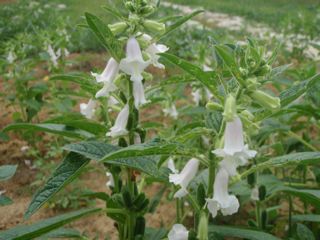
Photo by Jewel Kinilitan-Bissdorf
Sesame
Family: Sesame family
Other names: Benne seed, Beni, Benneseed, Benniseed, Gingelly, Sim sim, Til
Weeds
Grasses
Sedges
Broadleaf
Diseases
Fungal
Bacterial
Viral
Agro-ecology
Sesame is an excellent rotation
crop of cotton, corn, peanut, wheat, and sorghum; reduces nematode populations that attack cotton and peanut; excellent soil builder- improves the soil texture and moisture retention; lessens soil erosion - the composted sesame leaves left on the soil binds the ground; retains soil moisture better for planting the next crop; increases the yield of the following crop; resistant to drought; tolerant to insect pests and diseases; and a low cost crop and one of the best alternative specialty crops.
OISAT Field Guides
Field Guide to Non- chemical Pest Management in Sesame Production
download (410 kb)
External links
References
- Ashri, A. (1989): Sesame. Oil Crops of the World. Robbelen, G.; Downey, R.K.; and A. Ashri (eds.). McGraw-Hill Publishing Company: New York. pp. 375?387.
- Bedigian, D. (2004): History and lore of sesame in Southwest Asia. Economic Botany 58 (3): pp. 329?353.
- Bhatti, I.H,; Ahmad, R.: and Nazir M. S. (2005): Agronomic traits of sesame as affected by grain legumes intercropping and planting patterns. Pakistan Journal of Agricultural Sciences 42: pp. 56?60.
- Weiss, E. H. (1983): Oil seed crops. Longman: New York.

